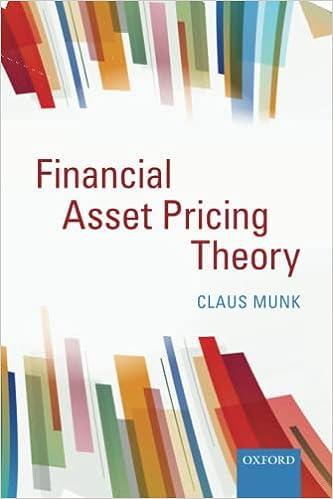Consider a one-period economy where two basic financial assets are traded without portfolio constraints or transaction costs.
Question:
Consider a one-period economy where two basic financial assets are traded without portfolio constraints or transaction costs. There are three equally likely end-ofperiod states of the economy and the prices and state-contingent dividends of the two assets are given in the following table:
State-contingent dividend Price State 1 State 2 State 3 Asset 1 1 1 0 0.5 Asset 2 2 2 2 1.8 The economy is known to be arbitrage-free.
(a) Characterize the set of state-contingent dividends that can be attained by combining the two assets.
(b) Characterize the set of state-price vectors ψ = (ψ1, ψ2, ψ3) consistent with the prices and dividends of the two basic assets.
(c) Find the state-price vector ψ∗ that belongs to the set of attainable dividend vectors.
(d) Characterize the set of state-price deflators ζ = (ζ1, ζ2, ζ3) consistent with the prices and dividends of the two basic assets.
(e) What is the risk-free (gross) rate of return Rf over the period?
(f) What prices of the state-contingent dividend vector (1, 1, 5) are consistent with absence of arbitrage?
(g) What prices of the state-contingent dividend vector (1, 2, 5) are consistent with absence of arbitrage?
(h) Show that the state-price deflator ζ ∗ that belongs to the set of attainable dividend vectors is given by the vector (0.75, 0.75, 1.2), that is it has the value 0.75 in states 1 and 2 and the value 1.2 in state 3.
Step by Step Answer:






